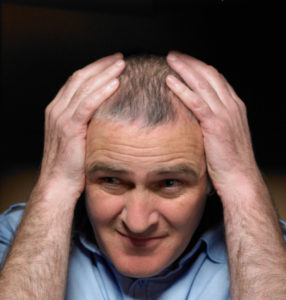Trauma in the Body
Trauma in the body shows up in a variety of ways, often combined with one another, for example insomnia and back pain.
Trauma in the body is a sign that some parts of your natural development were disturbed and twisted, causing unbearable shock to the system. You were helpless to respond because you had not yet developed the appropriate brain structures and emotional regulation scaffolding with which to deal with it.
Trauma in the body suggests shock that was so great that the disturbance was siloed – creating a sort of paralysis.
Kalsched, in his book, The Inner World of Trauma says describes trauma: “it’s any experience that causes the child unbearable psychic pain or anxiety…the distinguishing feature of such trauma is… ‘disintegration anxiety,’ an unnameable dread associated with the threatened dissolution of a coherent self.”
Trauma in the body – what kind of shocks to the system get stored in the body?
Infant Trauma in the body
At two months of age, just as Raphael was beginning to make out shapes and colors, smells and specific sounds, he cried when he needed comfort. He needed to feel the physical presence of his mother near him; to hear her heart beat, to sense her breathing – all to make him feel safe and secure, so that he could surrender to sleep. His mother was distressed by the constant crying, and was told by her parents to let little Raphael cry it out. He cried for hours on a daily basis. He was traumatized by the lack of response to the most basic need for nearness, safety and closeness that were the building blocks of developing his own sense of self in the world.
He wasn’t able to form words to express his desperation, and so the trauma which was a repetitive shock, day in and day out. Eventually his psyche steeled itself to survive without that vital aspect of care – proximity to mother. Trauma was stored in his body, in his emotional DNA. Raphael suffered with tension and insomnia most of his life – triggered by a fierce longing for the relieving comfort of his nervous system shot to pieces with the threat of having to keep awake and vigilant to ensure his being stayed alive.
Trauma in the body made the adult Raphael feel silly, weak and anything but macho! Angry about not being able to control his insomnia and backache, he used alcohol to numb the fear. He tried sleeping pills which just made him less alert in his job as a technical editor. He couldn’t explain it, and he felt bad about it, but it was the original trauma showing itself in its quest to get what he was deprived of at his most vulnerable time. He was stressed all the time and couldn’t relax enough to sleep. Trauma in the body pumped him full of ‘up-regulating’ neurotransmitters and stress hormones, keeping him on high alert.
Raphael’s longings for the comfort of a loved ones’ presence became overwhelming and powerful. The greater the longing, the more shame he felt and the more he tried to numb it. But the numbness was short lived, adding more shame and intense fear that he wasn’t able to keep it all together.
Trauma in the body – recreates the original shock and crisis to allow a make-up.
It was the same fear he had as an infant that broke through into his adult life – when he was settled in a career and doing well. (That’s when the body feels safe enough to reveal the hidden trauma). That fear of not being able to hold himself in tact – that needed the presence and essence of a caregiver to keep him swaddled in his skin and develop the mental structures to get through life without crumbling.
Trauma in the body – relational connections gone awry
Allan Schore in his book Right Brain Psychotherapy, says that “the attachment relationship between the mother and infant influences the bodily-based emotional states.” He goes on to say that “the hallmark of trauma is damage to the relational life. The repair and resolution of relational trauma therefore must occur in a therapeutic relational context.”
Trauma in the body was invited out in individual relationship counseling. With a consistent, caring, non-intrusive but exquisitely responsive therapeutic relationship. The relationship offered Raphael the right brain-to-right brain attunement that acts as the essential amino acids of building a self that is aware, flexible, able to reach out and self-soothe. In the unconscious non-verbal communication between Raphael and the therapist, his infant existential fears are acknowledged, accepted and allayed.
Childhood/adolescent trauma in the body
At the age of four Roseanne’s parents brought home a baby brother Terry, making her the middle of three children with a 6 year old sister June. Their mother was besotted with June and Terry, often forgetting about Roseanne, except as a useful pair of hands to do jobs around the house and help with the baby. Often her mother complained that Rosanne was unlovable, unattractive and was a mistake. Each time these debasing and devaluing comments were hurled at Roseanne she was traumatized, wanting to disappear to make her mother happy. Her siblings followed suit, barely acknowledging her existence – except when they wanted her to do something for them. The emotional distance of her father who sat in his chair with a book was also cumulatively traumatizing, especially when he didn’t stop his wife and children from their emotional abuse of Roseanne.
Trauma in the body came in the form of vertigo and bouts of severe nausea. Roseanne, having no settled foundation of security or secure relationship network developed dizziness – reflecting the continuous traumas that prevented her from forming a sense of self. The daily experience of being unwanted and unloved was shaking her up inside. There were no nurturing threads of connection; no reliable let alone consistent sources of relating that helped her deal with the fear of being ‘no one.’ She attempted to feel part of the family by thinking of herself in that same dismissive way – a disgusting stance toward herself, hence the nausea.
She wasn’t supposed to ‘be.’ The overwhelming trauma of not feeling herself a person made her unstable, unable to stand or move with dizziness and nausea. Trauma in the body was the only way she could feel herself and get any recognition from her mother that she was part of them.
In her adolescence Roseanne’s bouts of vertigo and nausea were exacerbated each time she changed grades, went to middle and high school and then finally to university. These transition points poked at the early traumas of lacking a sense of belonging. Trauma in the body through the incapacitating experience of vertigo and nausea was a reminder of how treacherous her life was – living without a net – since the relevant parts of her brain had not come on line due to neglect and abuse at the critical early times. She was tremendously insecure, living in a world of both external and internal criticism from her head.
Trauma in the body meant that Roseanne didn’t trust compliments by teachers; attempts to connect by her fellow students were received as hidden manipulations to use her for their own ends; and saddest of all, Roseanne was terrified of dating. She had no place inside where she could hold a notion that she was interesting, attractive or fun to be with. Trauma in the body flared up each time she was approached by a teacher with praise or an invitation by a group of students to join their weekend parties.
As Bessel Van Der Volk says in his book, The Body Keeps the Score, “Trauma, whether it is the result of something done to you or something you yourself have done, almost always makes it difficult to engage in intimate relationships.”
The vertigo and nausea increased in frequency, duration and severity, making it impossible for Roseanne to work as a school counselor. For as long as she could remember, food had been her only comfort. She would hide food in her room as a young child, but now as an adult well into her forties, stuffing herself was no longer soothing her. That’s when Roseanne finally reached out and made an appointment for therapy. Having a finely attuned therapist who spoke to the trauma in the body as the language of her deprivation and lack of self-identity enabled Roseanne to form the neural networks of connection necessary for emotional regulation. Trauma in the body enabled the memories of the unstable and scary experience of having no sense of belonging to come out in family of origin therapy – so that she could be given the experience of being wanted, loved and cherished, as her insecurity messed with her ability to trust and take in nourishing emotional food.
Copyright, Jeanette Raymond, Ph.D. 2021
You may also like:
Cure insomnia by dealing with anger and relationship stress
Three ways to end back pain linked to mistrust in relationships
Releasing pain in your body by getting in touch with buried emotions




